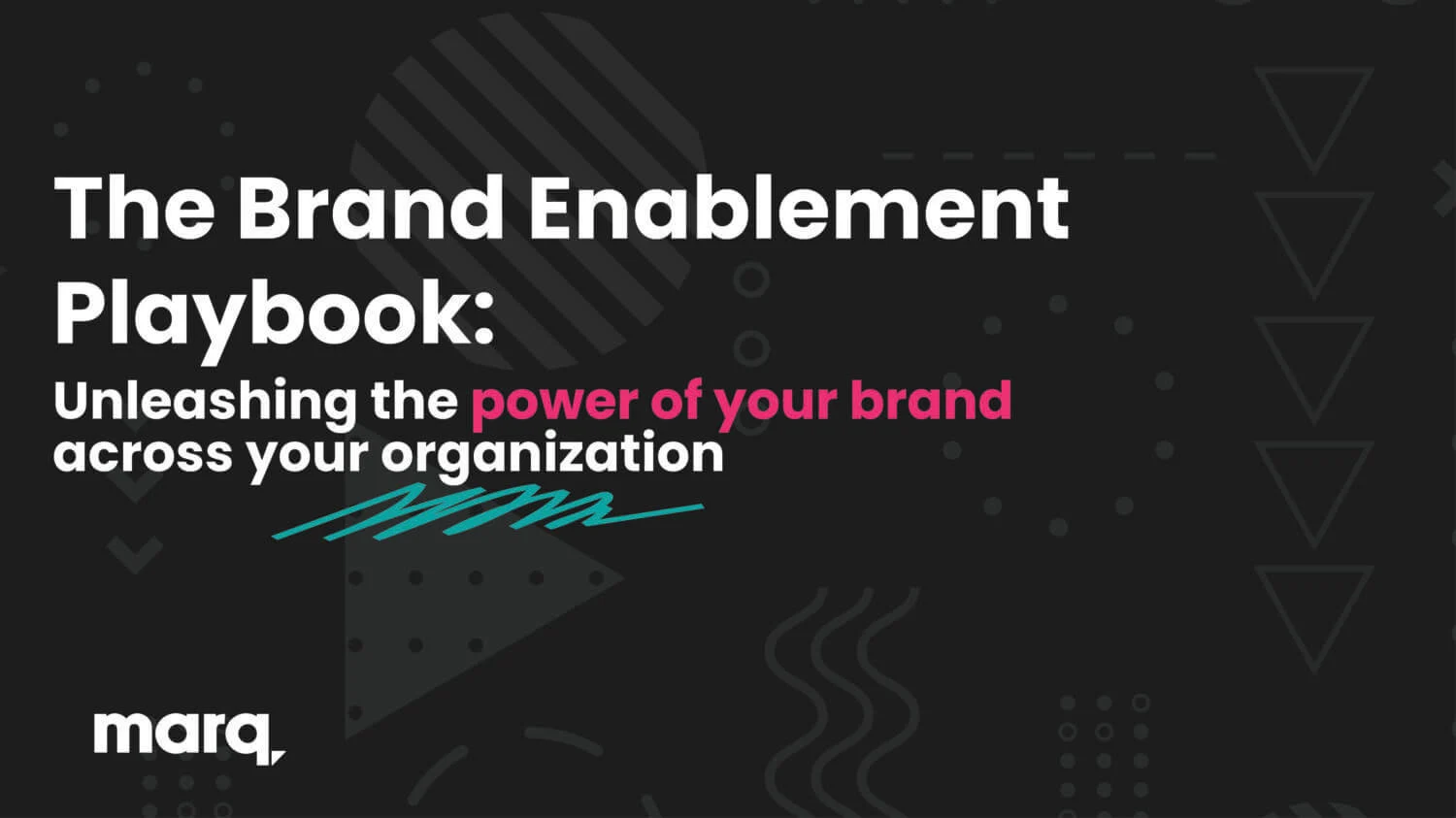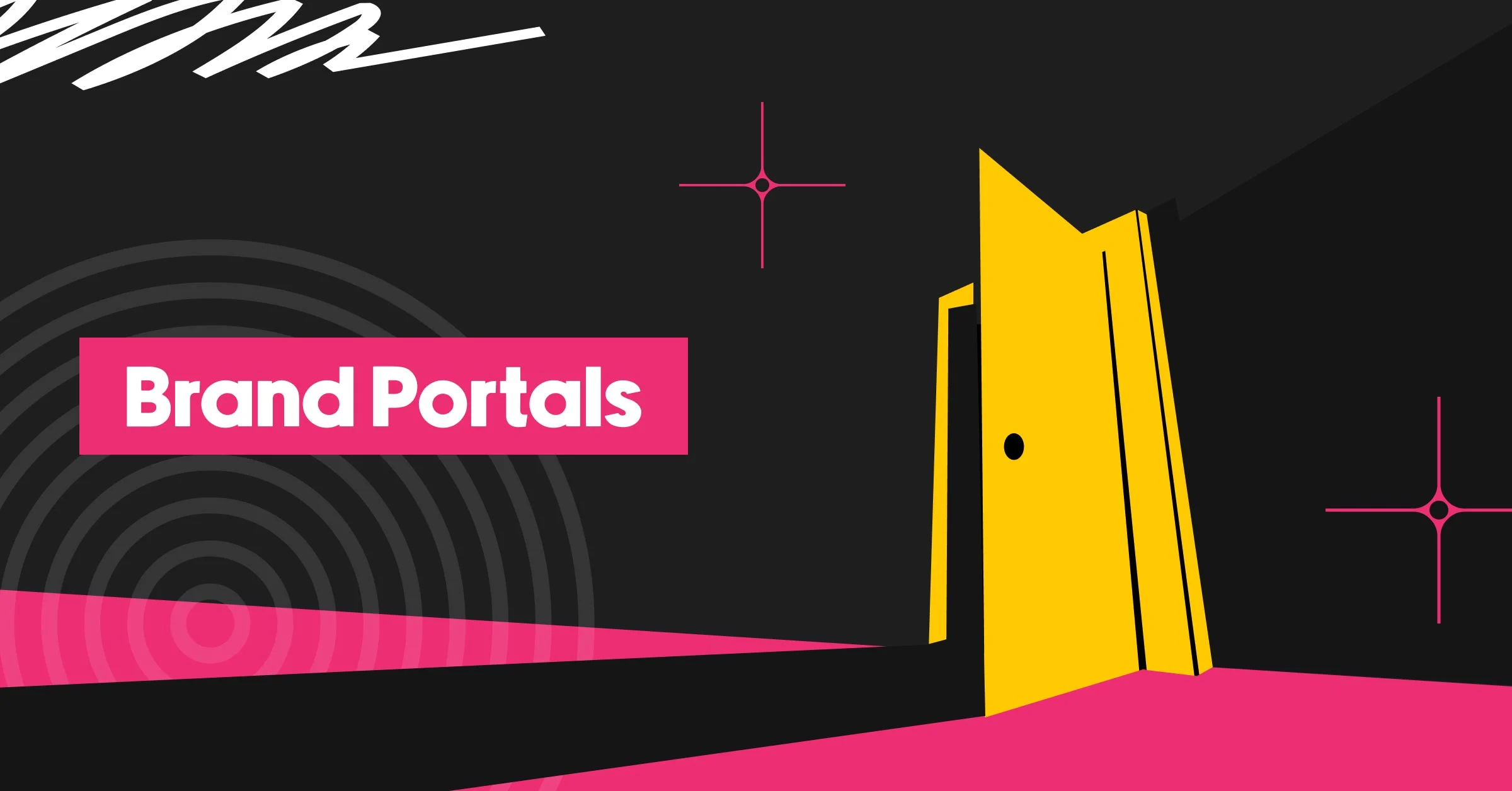In most organizations, the disconnect between brand and the rest of the organization is real.
On the one hand, brand and creative teams are constantly bombarded with requests, trying to fulfill as many as possible with limited time and resources. Most requests come with unrealistic turnaround times, leaving creative teams in a tough place to deliver.
And on the other hand, creative teams sometimes evolve into the “brand police,” which can make a brand feel “off limits” to other orgs. Doing so limits cross-functional creativity, introduces creative bottlenecks, and creates a negative dynamic between brand and other teams.
The result? Creative teams feel like short-order cooks feeding the never-ending content beast, and customer-facing teams start creating rogue content when marketing can’t fulfill their one-off requests.
That’s why modern organizations need a brand enablement solution that puts the power of your brand in the hands of your employees without sacrificing the most critical elements of your brand.
What Is Brand Enablement?
Brand enablement is the strategic process of equipping teams across your organization with the content, guidelines, and tools they need to promote your brand effectively.
It’s much more than a brand guide; it’s the process of empowering your people to promote your brand across the channels they’re in every day.
Modern brand enablement solutions help your people promote your brand by:
- Connecting employees to the most up-to-date content pieces
- Allowing employees to personalize content when they need it most
- Giving visibility into the content teams are creating
- Speeding up the approval process for quicker turnaround times
- Getting more personalized content into the hands of your customers
Organizations with Brand Enablement vs. Without
To compete in today’s fast-moving market, teams need a way to produce highly-personalized content for their customers at any given moment. For most businesses, content is the key to convincing potential buyers that you’re the right business for the job.
But without a brand enablement solution, it can be easy to overload creative teams with an endless queue of content requests.
Let’s look at how brand enablement can unleash your brand’s potential while saving your organization time and money.
 Brand Enablement Drives Business Growth
Brand Enablement Drives Business Growth
By equipping your teams with proven brand enablement tools, you’re making it easy for every existing and potential customer to have a meaningful interaction with your brand.
With easy access to lockable brand templates, your teams can deliver personalized content to potential customers faster than ever. This unique approach takes the burden of small content requests off of design teams and gives customer-facing teams the tools they need to win business.
 Brand Enablement Speeds Up Content Creation
Brand Enablement Speeds Up Content Creation
When potential customers come to you, they want to know instantly how your product or services can solve their problems.
They don’t want generic content; they want content that’s tailored to their needs.
With a brand enablement solution, team members can choose an approved template, customize it, and send it to a customer. This process shortens turnaround times, guarantees brand consistency, and removes tedious requests from the creative backlog.
 Brand Enablement Improves Brand Reputation
Brand Enablement Improves Brand Reputation
Opening up content creation to everyone doesn’t mean content chaos. It means you’re empowering your people to promote your brand the right way.
With lockable templates, team members can personalize and deliver fresh content that’s always compliant with your brand standards.
Creative teams have complete visibility into the content being created, and customer-facing teams feel empowered with a way to create on-brand content.
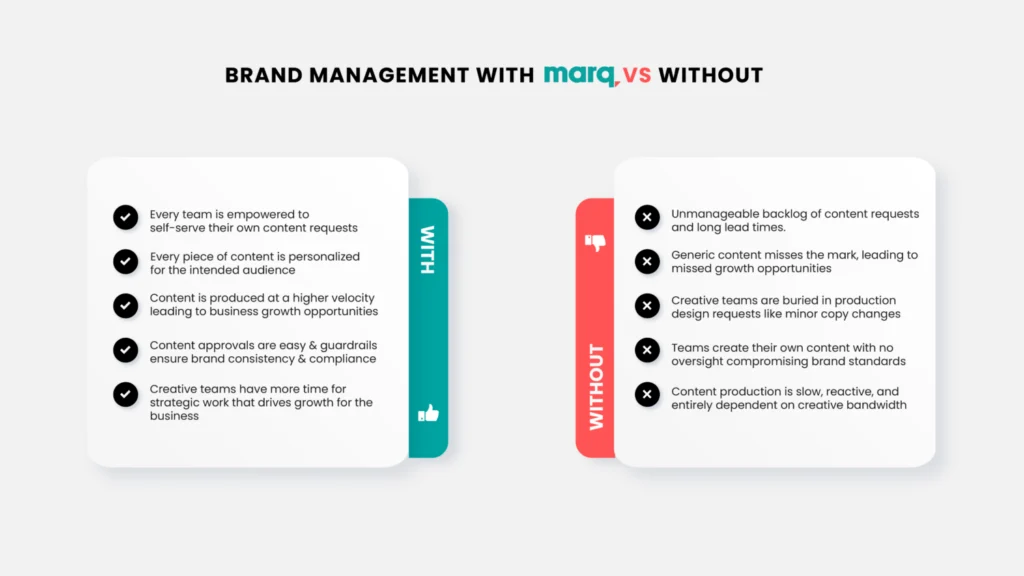
How to Implement Brand Enablement
Whether implementing brand enablement from the ground up or refining a system already in place, you’ll want to take inventory of your current brand assets and creative processes. Doing so will help you identify gaps to build a more holistic brand enablement plan.
Here are six steps we recommend you take when getting started with brand enablement:
Step 1: Create a culture of alignment
How well do your brand and creative teams collaborate with other departments?
Without a solid brand enablement process in place, your answer might be: “Not that well.” And that’s okay.
Your first goal is to build cross-functional relationships across the company to ensure everyone is aligned with your brand enablement vision.
Step 2: Determine the content goals of other departments
For brand enablement to work, you need to equip your teams with the content types they need to be successful. Take the time to identify cross-functional partners’ content needs and goals and build them into your content production plans.
Step 3: Establish clear brand guidelines
When it comes to branding, consistency is everything. Whether you have a brand style guide or a brand enablement platform like Marq, make sure you have a source of truth that outlines everything that matters to your brand, from typography and color to logos and imagery.
Step 4: Choose the right technology to facilitate content creation
Multiple file types across hundreds of programs create a mess of content only usable by the original content creator. You need shared technology that won’t break the bank, ensures brand consistency, enables users to self-serve their content needs, and empowers everyone to personalize and share content easily.
Step 5: Implement a process for approvals and check-ins
Brand control doesn’t stop with brand enablement. Instead, it should be easier to get content out the door, and content approvals should work for you, not against you. Align on a process that works for your cross-functional teams and brand protectors.
Step 6: Establish performance metrics and implement feedback loops
Your content is only effective if it drives results. Decide what metrics you will use universally to measure performance and create feedback loops so your team is always looking at the data to drive better content decisions.
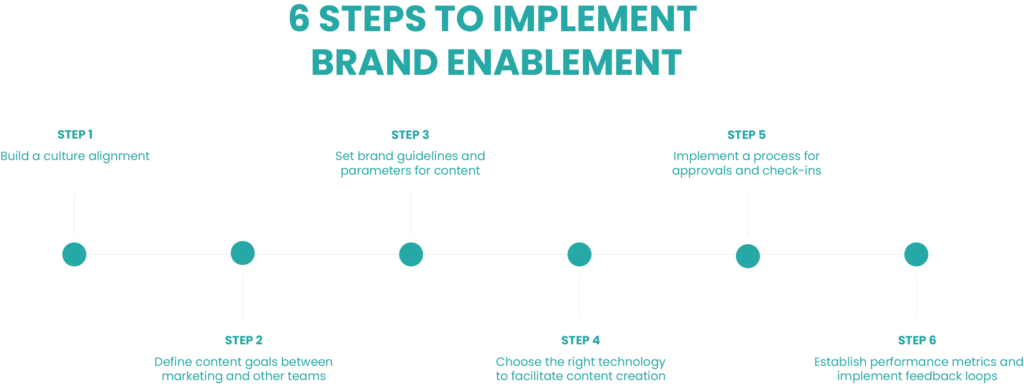
How Marq Makes Brand Enablement Easy
Not all brand enablement tools are built the same, but the best, most comprehensive brand enablement platforms will empower your teams to create stellar on-brand content that drives growth for your business.
With Marq’s ability to convert all of your designs into reusable branded templates, everyone in your org can create and share on-brand content.
Here’s how Marq works:
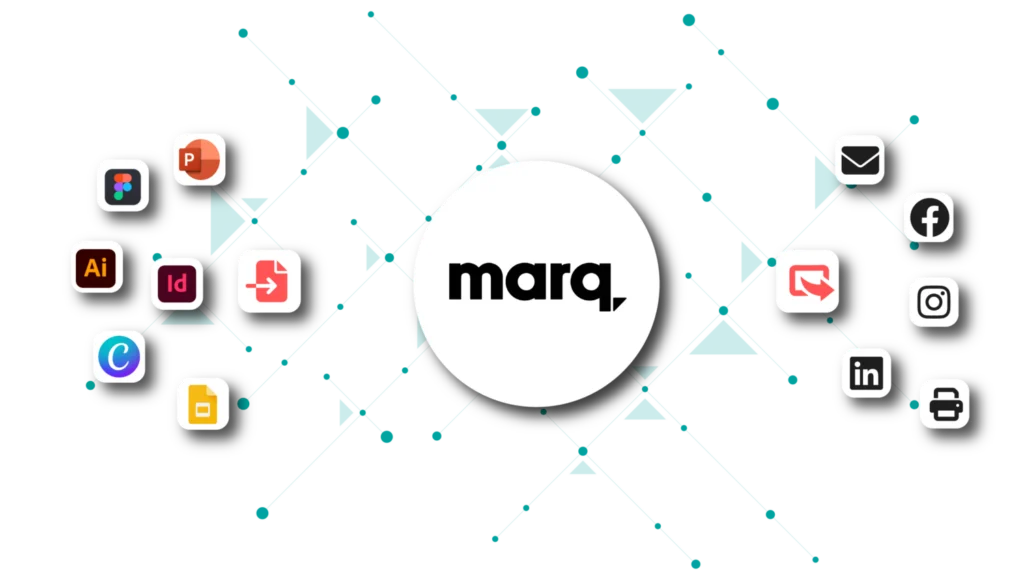
01 Design Anywhere
Creative teams can import existing design files from any platform or create designs locally in the Marq editor.
Why organizations love this
- Creative teams can build designs on the platforms they’re most comfortable with
02 Templatize Anything
With Marq, you can turn any design into a template by locking critical brand elements like fonts, logos, and colors.
Why organizations love this
- Creative teams create one version of a lockable brand template instead of updating the same design file hundreds of times.
- Other teams can access approved templates for pitch decks, social posts, one-pagers, and more.
03 Personalize Everything
Share brand templates across your organization so teams can customize content for their unique audiences.
Why organizations love this
- Creative teams save time by allowing teams to fulfill their own content requests.
- Other teams can quickly personalize approved templates without submitting a creative request.
04 Share Everywhere
Teams can immediately publish content without having to leave the Marq platform. Quickly post any project to social media, send it to print, or embed it in an email.
Why organizations love this
- Creative teams feel confident that every piece of content that’s shipped meets brand standards.
- Other teams win more deals by getting content into the hands of customers faster.
Imagine the content output and level of personalization when you put brand enablement to work for your organization.

Upgrade your brand management strategy to a brand enablement strategy today. You can schedule a demo here.
Brand Enablement FAQs
Brand Enablement is a strategic approach that goes beyond traditional branding. While branding focuses on creating a brand identity and recognition, Brand Enablement takes it a step further by empowering brands to thrive in the modern marketplace. It involves providing brands with the necessary tools, technologies, and resources to enhance their presence, engage their target audience, and adapt to evolving market trends. Essentially, Brand Enablement enables businesses to translate their brand vision into tangible, sustainable success.
Brand Enablement offers numerous benefits for businesses seeking to establish a strong market position. By investing in Brand Enablement, your business can:
Drive Customer Engagement: It helps you create compelling brand experiences that resonate with your target audience, increasing customer loyalty and advocacy.
Competitive Advantage: Brand Enablement allows you to differentiate your brand, making it more memorable and recognizable in a crowded marketplace.
Adaptability and Innovation: With the right tools and technologies, Brand Enablement empowers your brand to adapt quickly to changing market conditions and embrace innovative strategies.
Brand Consistency: It ensures consistency across all brand touchpoints, including online and offline channels, fostering trust and credibility among customers.
Employee Alignment: Brand Enablement aligns your employees with the brand vision, fostering a sense of purpose and enhancing overall productivity.
